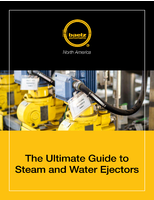Future of Reaction Injection Molding (RIM) Industry is Bright for Gusmer | Decker after Merger
Share:
Merger of Gusmer and LCC/Decker, two respected RIM molding equipment suppliers, provides customers with improved technical/customer support, standardization and stocking of machine components, integrated spare-parts support, and expanded product offerings
As reaction injection molding (RIM) applications expand worldwide, RIM equipment suppliers such as Gusmer and LCC/Decker provide the sophisticated metering machines and mixing heads required to process multi-component polyurethane and hybrid urethane chemicals. Today, these two respected RIM equipment suppliers have merged into a single RIM-focused business unit called Gusmer | Decker to better serve existing customers and to look to the future of the reaction injection molding industry.
Gusmer | Decker will continue to provide technical and consumer support for the hundreds of units from both brands that are currently in the field. In addition, Gusmer | Decker will leverage over 40 years of combined technology, engineering and manufacturing knowledge to develop new, innovative product lines and process solutions for new applications worldwide.
"Combining the resources of these two well-respected RIM design and manufacturing business units will allow us to significantly expand our product offerings, as well as enhance technical/customer support around the world," says Dennis Commette, vice president and general manager of Gusmer | Decker.
For Gusmer and LCC/Decker equipment owners, the merger will have several benefits, including: improved technical/customer support through one centralized technical service contact number; integrated spare-parts support for quick turnaround times; standardization and stocking of machine components for immediate delivery; and expanded metering/mixing solutions to meet most RIM applications.
Billed as "limited only by your imagination," RIM technology is flexible enough to deliver on that promise. RIM molding systems can produce virtually any molded part, and are an attractive alternative where higher quality is required, at low cost.
In the reaction injection molding process, polyurethane is injected into a mold to produce high quality plastic products. To accomplish this task, sophisticated RIM equipment is required to handle the mixing, heating and metering of the chemical components that make up polyurethane just prior to its injection into the mold. The advantage of utilizing a polyurethane RIM system is that it can be configured to produce a final product that is foam or solid, and can vary from flexible to rigid.
Finished RIM parts are durable, chemically resistant, wear resistant, low weight and have high insulation values. Part created by reaction injection molding include bumpers for vehicles, steering wheels, dashboards, skis and snowboards, footwear, ice chests, sporting goods, car seats, refrigerator insulation, decorative moldings, and mannequins.
"We see tremendous opportunities in RIM markets for new applications," says Commette. "The performances of polyurethane materials make it an attractive solution for demanding applications or where higher quality product is required."
According to Commette, as global markets continue to be more responsive to customers' demands for better product performance and higher quality, manufacturers will seek alternative material solutions such as RIM technology, which also lend themselves to manufacturing cost reductions.
"We have seen a significant growth in polyurethane product outputs in countries around the world, which in the past made up only a small portion of the RIM market," says Commette. "This is where the performance of polyurethane products, combined with the inherent adaptability of the reaction injection molding process to automated manufacturing processes will prove to be a key technology solution."
For More information:
Gusmer | Decker
A Graco Company
Phone (800) 746-1334
e-mail: info@gusmer.com
www.gusmer-decker.com




